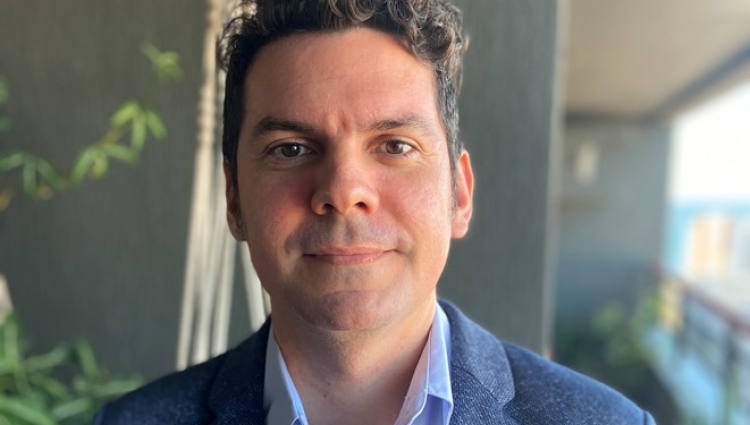Zitterbewegung and topological confinement of moiré excitons in twisted van der Waals bilayers
Publicado: 22/09/2023 - 15:52
Última modificação: 22/09/2023 - 15:52

Recent advances in fabrication and manipulation of two-dimensional (2D) materials have enabled the control over stacking order and rotation between layers of transition metal dichalcogenides into van der Waals heterobilayers. In such twisted bilayers, the moiré pattern created by the lattice mismatch between atoms of the two layers play an important role: it produces an effective potential profile along the plane for excitons, with potential minima emerging in regions with specific local stacking registries. The superlattice of moiré potentials results in a new band structure for the bilayer, and the quasi-particle related to this band is called "moiré exciton".
In principle, the most precise way to calculate such moiré exciton band structure would be to construct a unit cell of the moiré pattern, with all its atoms, and perform ab initio calculations of the corresponding electronic structure. However, the huge number of atoms in such unit cells, especially for very small twist angles, makes first principle calculations computationally expensive and prohibitive. In this talk, I suggest an alternative way to calculate moiré exciton band structures in a continuum model approximation, which allows us to investigate these quasi-particles in heterobilayers with arbitrarily small twist angles. Our results show that moiré excitons in MoS2/WSe2 exhibit a Dirac-like band structure, where the mass of the associated Dirac fermion can be controlled by an external electric field.
Two consequences of this unique band structure will be discussed: (i) the trembling motion of the exciton wave function, due to the effect known as zitterbewegung - a solely quantum effect that has been predicted by E. Schrodinger in the 30's, but for which an experimental proof has been elusive; and (ii) the possibility of observing topologically protected moiré excitons in a grain boundary between different regions of the van der Waals stack.